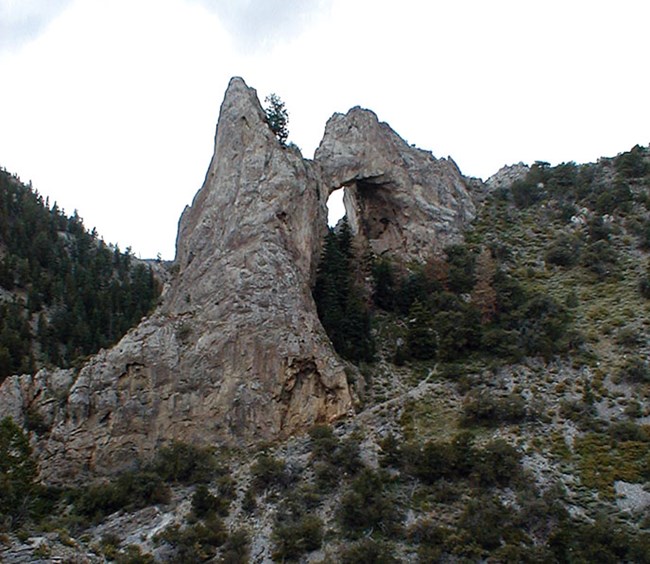
How did it form? Rising high above the floor of Lexington Canyon, this imposing natural arch was created by the forces of weather working slowly over a span of centuries. Lexington Arch is unusual in one important respect: it is carved from limestone. Most of the natural arches of the western United States are composed of sandstone. The fact that Lexington Arch is made of limestone leads to speculation that it was once a passage in a cave system. Flowstone, a smooth glossy deposit that forms in caves, has been found at the base of the opening lending support to this theory. It is even possible that Lexington Arch is actually a natural bridge. The distinction: an arch is formed by the forces of weathering, such as ice, wind, and chemical breakdown of the rock. A natural bridge, by contrast, is formed by the flowing waters of a stream. It is possible that long ago when Lexington Canyon was less deep, the waters of Lexington Creek flowed through a cave in the wall of the canyon and in the process enlarged the tunnel that later became Lexington Arch. If this happened, then the Arch is truly a natural bridge. Planning your tripLexington Arch is located in a remote and wild section of Great Basin National Park. The dirt road is unimproved. Be prepared for rugged terrain and remember the high elevation. Hiking boots are essential on the rough rocky trail. Bring water and a snack and be prepared to spend the better part of a day driving and walking to Lexington Arch. Weather conditions can change rapidly, so come prepared for all types of weather, including sudden rainstorms and snow. Getting ThereFrom the Great Basin Visitor Center in Baker, drive south on NV Hwy 487 10.7 miles (17.2 km). On this stretch you will cross the state line into Utah, at which point NV Hwy 487 becomes Utah 21. Pass through the town of Garrison, and then pass Pruess Lake on your right. Look for the first dirt road on the right just south of Pruess Lake. Turn right onto the dirt road with a sign for Lexington Arch. |
Last updated: April 2, 2025
